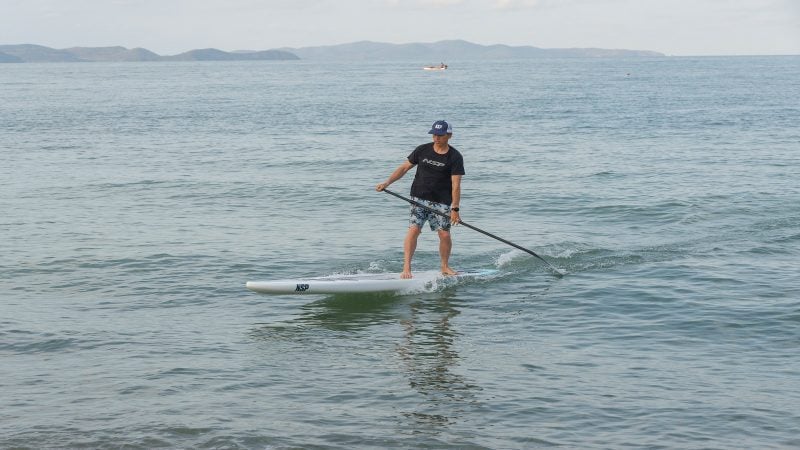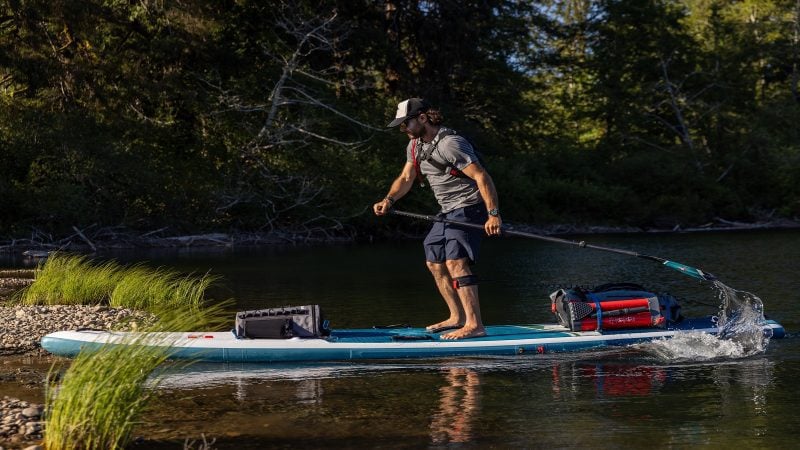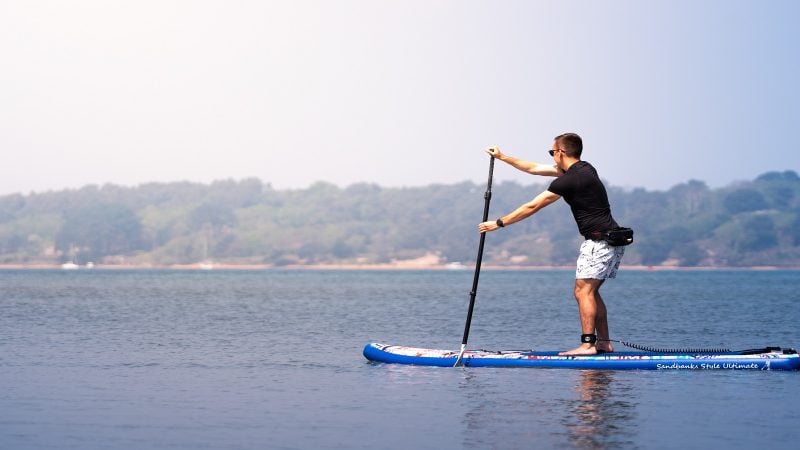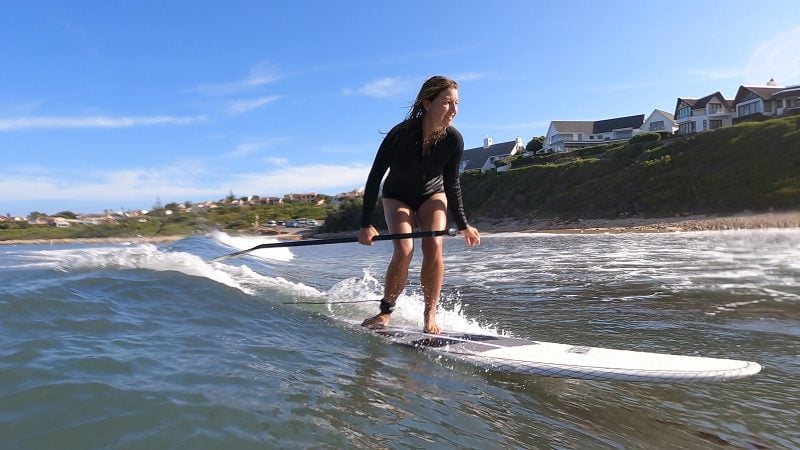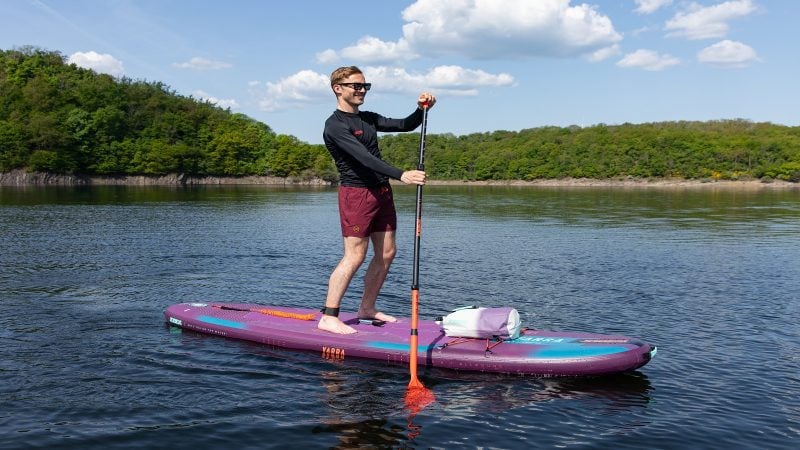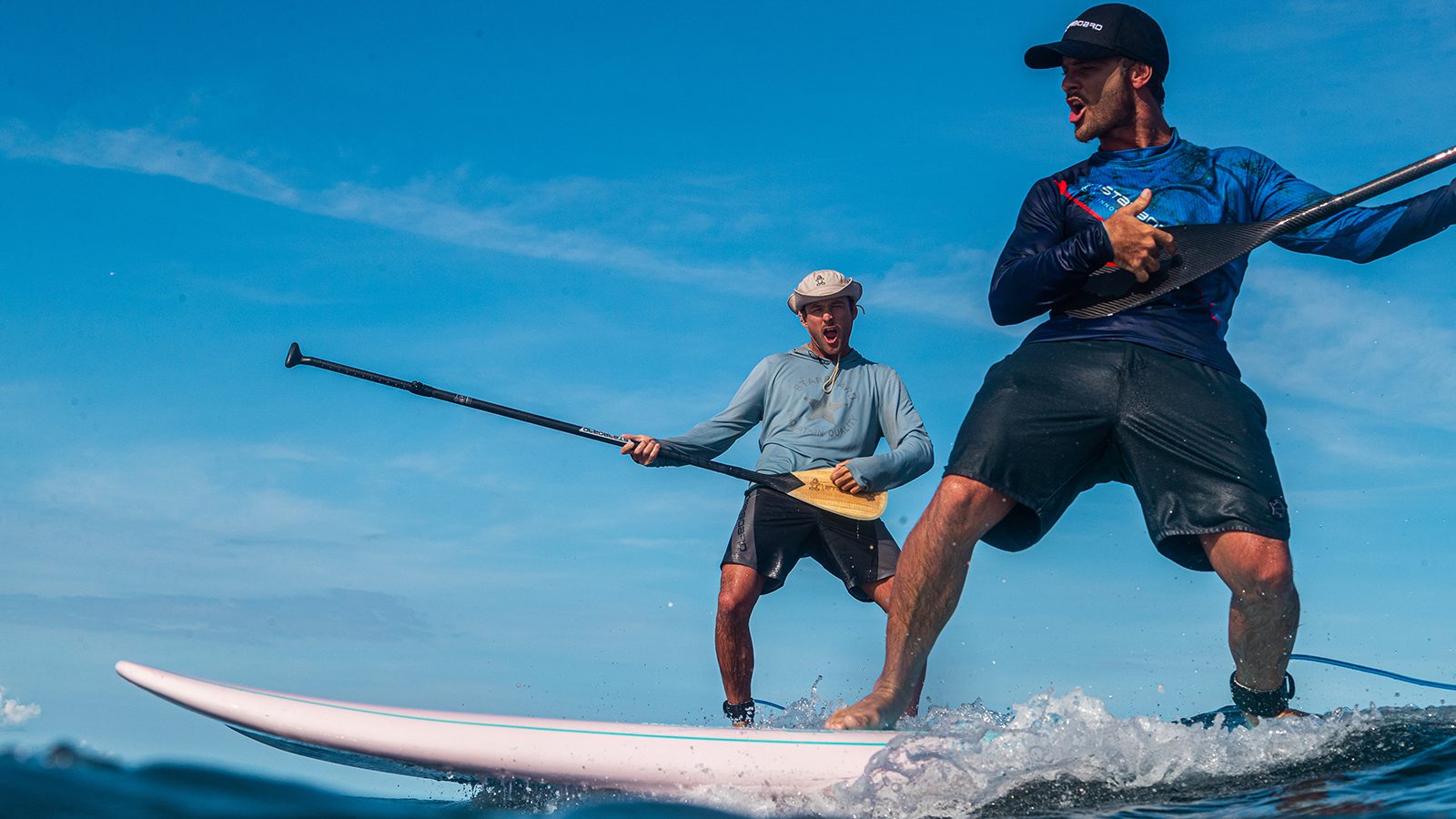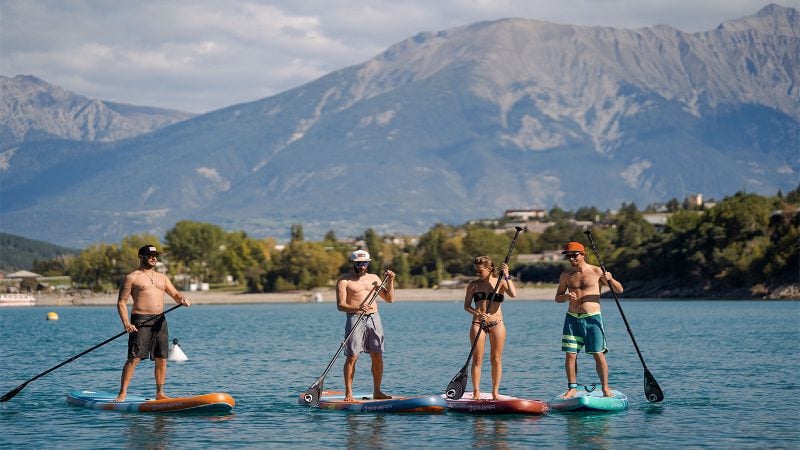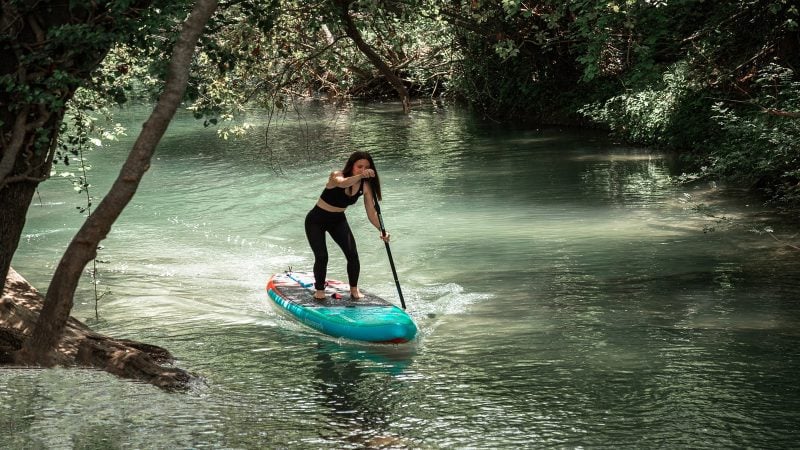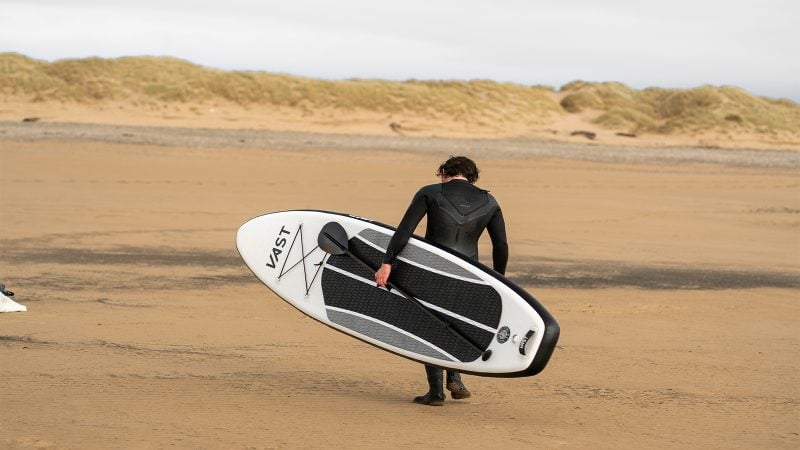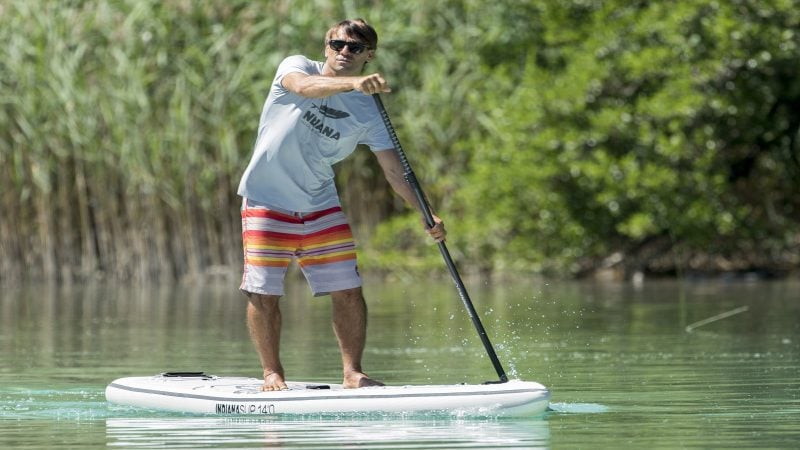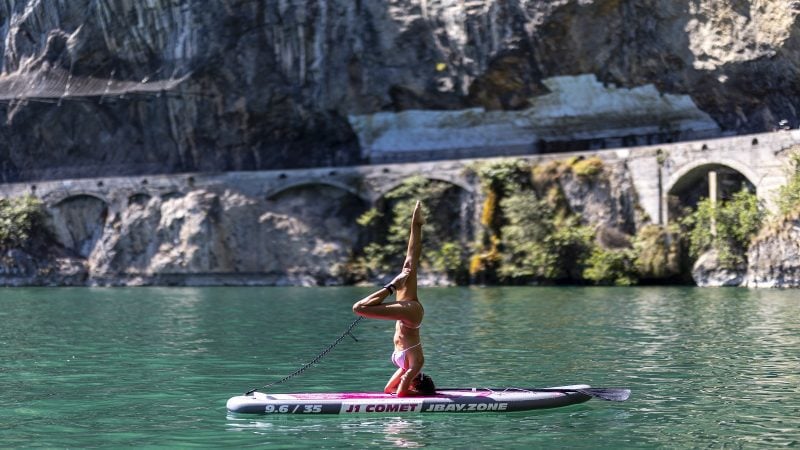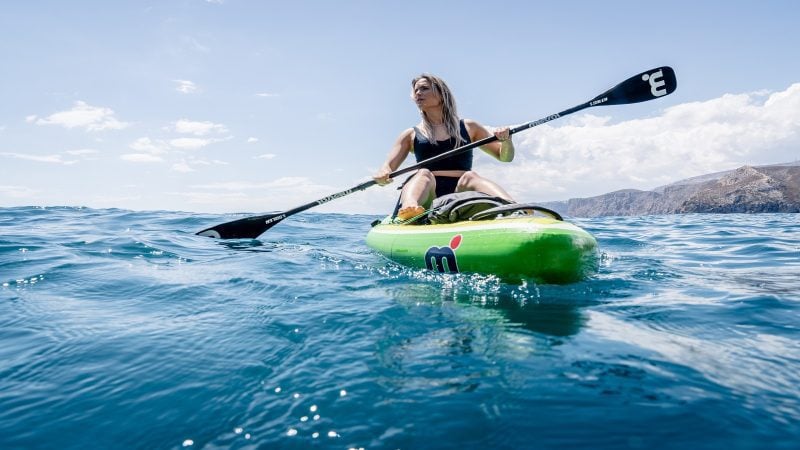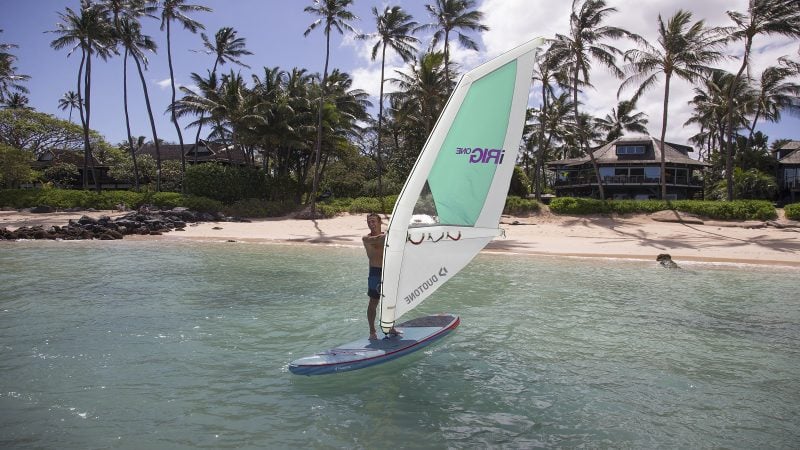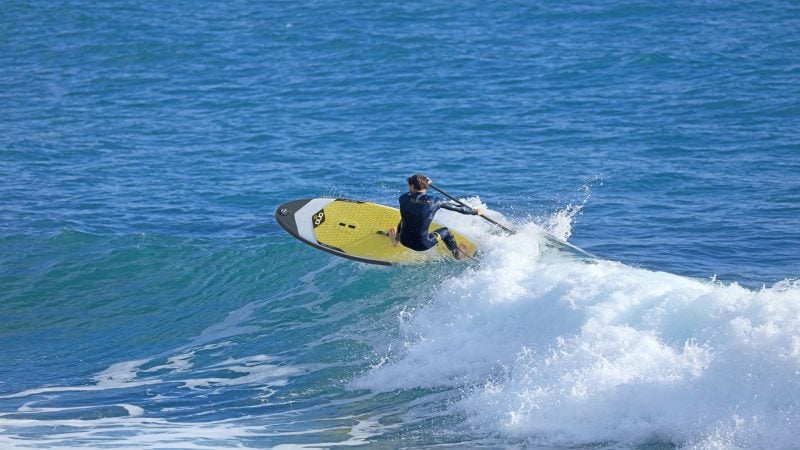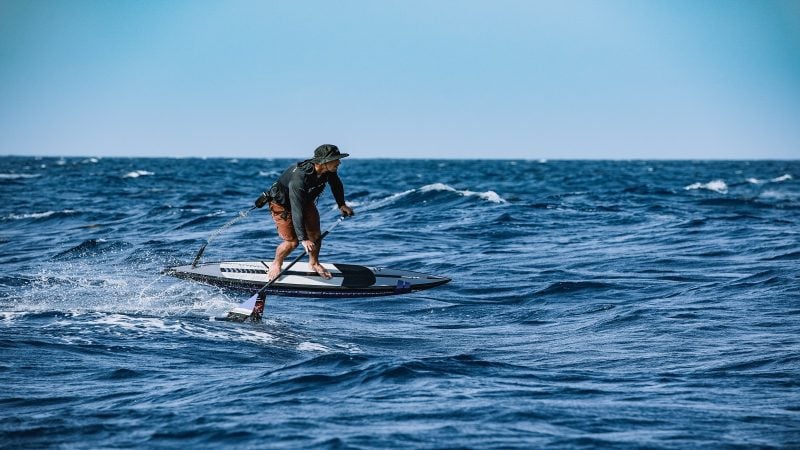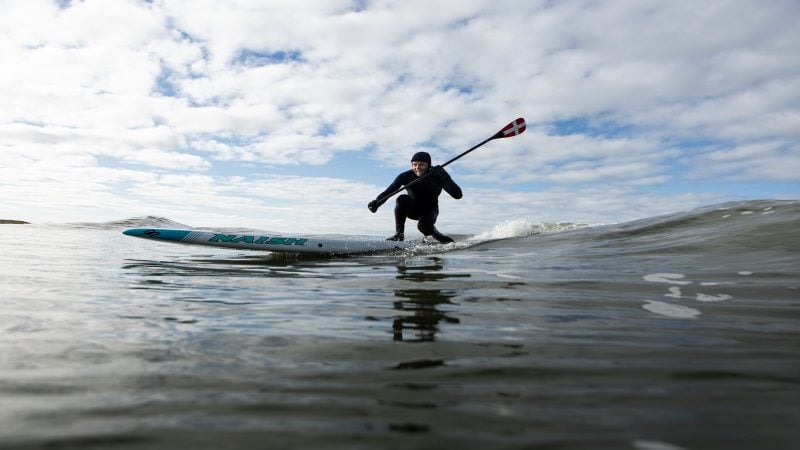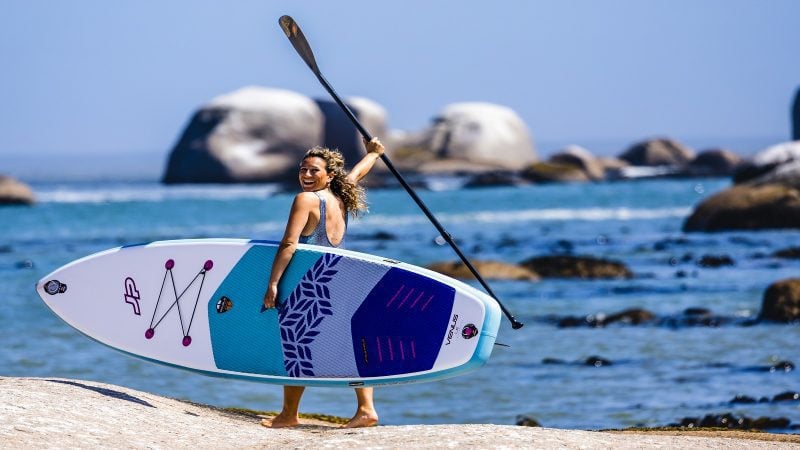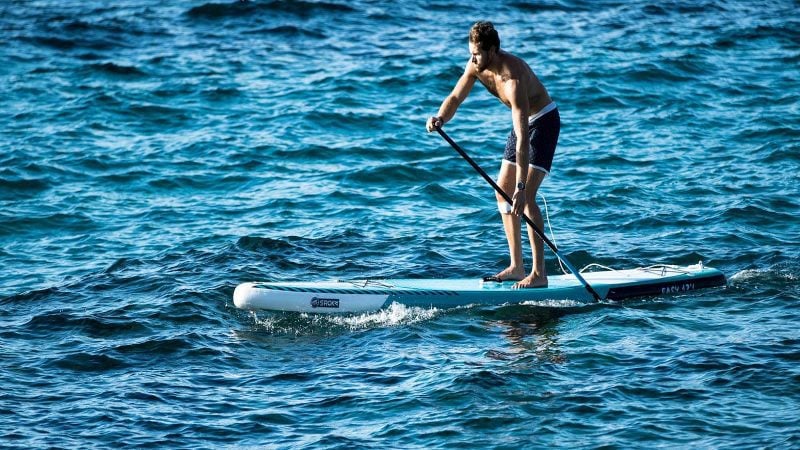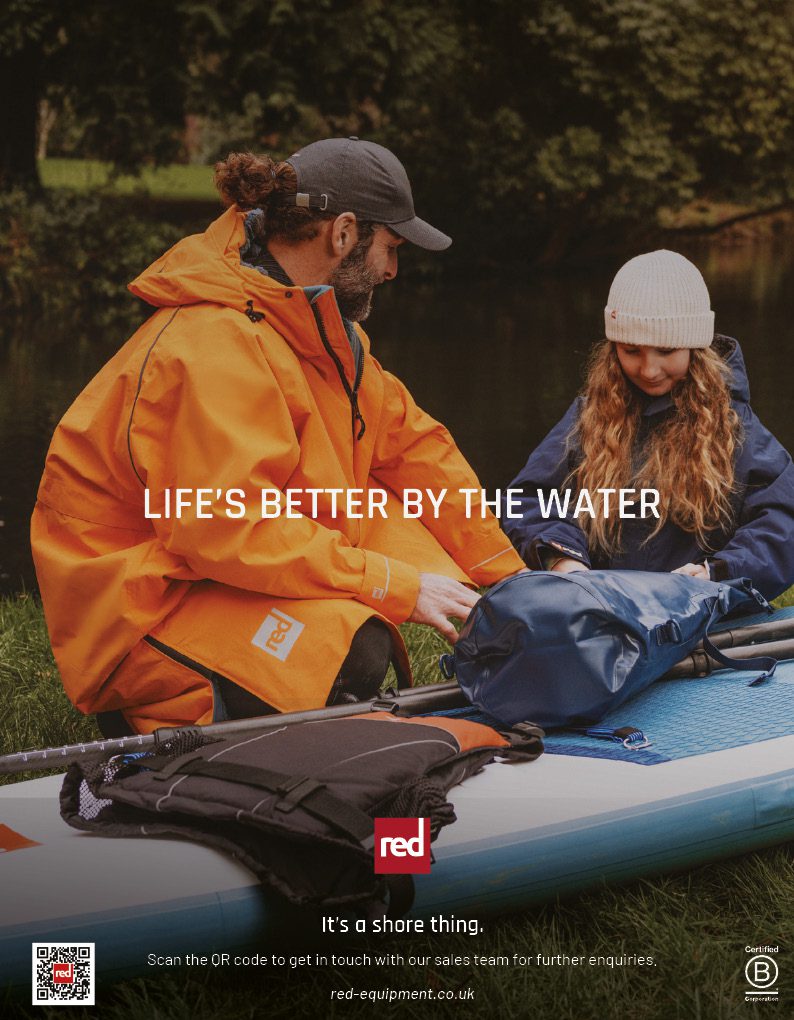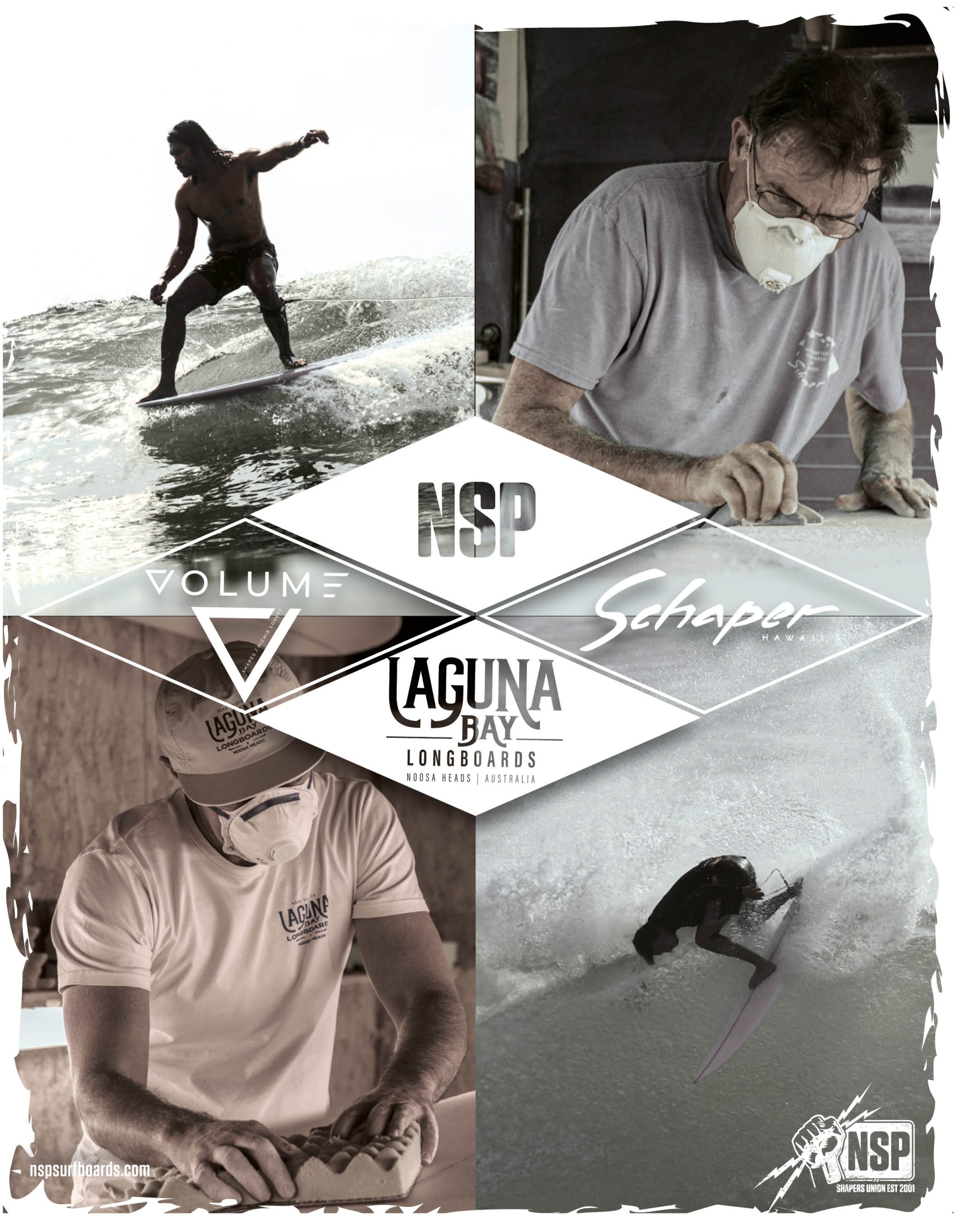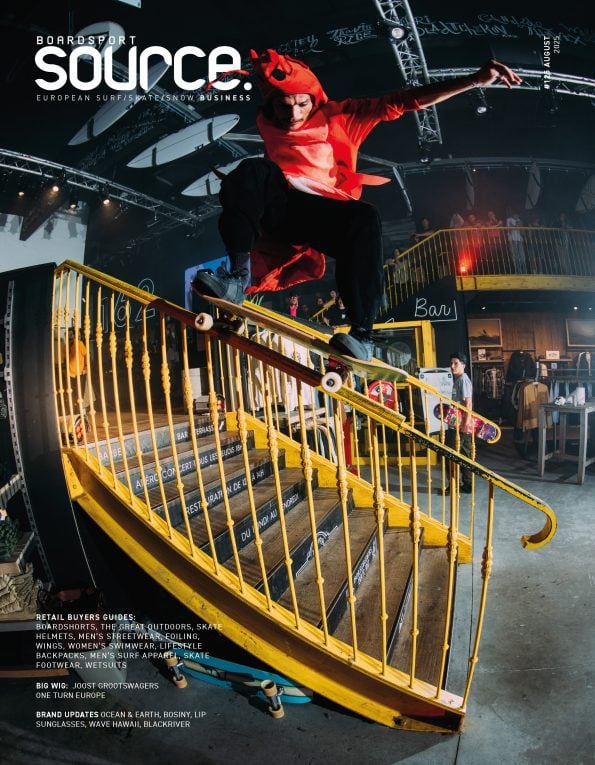SUP 2025 Retail Buyer’s Guide
With great power comes great responsibility. With great volumes comes great troubles. The bigger the SUP market grew the harder it took the fall. After two difficult years, the industry has officially overcome the overstock situation and reboots on a healthier basis in 2025. By David Bianic
Overpumped, pressure filled, it took two years to deflate slowly until showing a more sustainable balance. We are not bringing up the case of an ill-manufactured SUP. No, this is an effortless metaphor of the SUP market: overwhelmed with post-COVID demand, force-feeding the retailer with products exactly when the consumers backed down. The resulting overstocks plagued the whole industry in 2022-23, but the burden is eventually behind us: “By 2024, we observed a significant reduction in inventory levels, leading to a more balanced supply and demand scenario”, reports Ollie O’Reilly, Starboard Brand Manager. All the brands are on the same page: retailers got rid of their 2022-23 SKUs. As reminded by Alexander Hasch, Head of Sales & Marketing International for Fanatic, “sales figures indicate that demand has remained stable”, proving the interest in SUP paddling has never been challenged. But the way brands did business sure did.
To add insult to injury, the overstocks mainly affected the entry-level segment, where margins shrunk to peanuts as a result of a price war against no-names outsiders. Did the core brands reassess their strategy in 2025 to differentiate themselves from the cheap-thrills makers? On the one hand, Sandbanks Style offers a lower-priced board with a 5-year warranty, “which will appeal more to customers looking at the budget end of the market” and a higher performance version of the same board with a 7-year warranty, which “will offer more margin for shops”, ensures Jordan Belcher, Manager.
Another solution is found at JBay.Zone as the brand introduced a “very wide range of products specifically designed for chain stores, with highly competitive recommended retail prices”. Steve West, Commercial for Mistral, offers a more in-depth breakdown of the sales schedule with “cash cow boards to recoup costs early in the season […] and these remain the entry level family boards often with relatively low margins. As the season stretches out, if this range is depleted then you’re into the niche area boards commanding higher margins”. Without further ado, let’s see how 2025 plays out between those two iSUPs categories: entry-level and specialty models.
2025 Allrounder trends
Entry-level has been associated with the allround designs, a model which can be tricky to put in a box as it “remains a little ambiguous as a market segment, by default non-specific in its performance”, says Steve at Mistral. Hence the “malibu shape”, an appropriate design for its combination of stability, glide and small wave riding. The design might be associated with lesser skilled paddlers but, for all that, it doesn’t translate in under-par specs when we look at the endemic brands. See the Jobe Aero Yarra 10.6 SUP, with its lightweight X-dropstitching and heat-bonded technology, a 5mm non-slip EVA deckpad, carbon paddle, EZ lock fin, bungee storage, and essential accessories. A 9.5 kg iSUP backed by a 5-year warranty.
Another brand to propose a carbon paddle in their allround package is Glory Boards (Fun 10’), when most cheap brands offer poorly manufactured alloy paddle. Yet the paddle is the only direct connection of the rider with the water and can make a huge difference on the experience.
Let’s make a sidestep on that matter, as Starboard introduced a new carbon paddle, the Velocity, which is not aimed directly at the entry-level paddlers, but clearly leans towards the “smooth paddling”, with a less impactful blade for distance and open-ocean enthusiasts, while “the intermediate, recreational paddlers will enjoy the smooth, flutter free sensation of the paddle”.
Versatility is also key in the allround category and JP Australia has designed their AllroundAir range with this in mind, “to cover the widest range of average paddler’s needs: from absolute beginners to those taking white water runs; from amateur surfers to yoga enthusiasts”. In addition to versatility, ease of use/transport/storage has attracted newcomers in the paddling activity. Hence, the “Compact” design pioneered by Red Equipment in 2019 and refined since then: “Globally patented, our Compact concept of folding and rolling the board has now been well tested and tried by thousands of customers”, says George Shillito, Commercial Director. Now built even lighter using MSL®1000 both the 9’2 and 11’0 have been refined for flatwater cruising and sup surfing. Starboard’s iGO is also praised for its compact folding called Roll technology, allowing you to roll the board, thanks to the 3-piece fin box, into a significantly smaller bag. Downsizing is also in the air, as kids and light/small adults can now find a handful of dedicated iSUPs for their build, such as the KA250 Kame from JBAY.Zone, a 9.0′ board with compact dimensions, “easy to handle and quick, designed to introduce teenagers to stand up paddle with an easy, fun but also high-performance board!” Same program with Spinera’s Classic model, a 9’10’’ designed especially for women, teenagers and children, at a mere 7.8 kg.
Let’s wrap up this overview with the rental/school models, often in competition with their hardboard siblings. Aqua Design sells a specific inflatable SUP built for rental professionals, the IOTA 10′, featuring reinforced PVC, multiple handles, and unbreakable fins, which can “withstand intensive use” ensures Guillaume Barbier, Product & Marketing Manager.
As per technologies – and this is valid for all inflatable categories — it seems we have reached a status quo as all brands stick to their proven constructions. Whether this is a sign of maturity of the market or simply a plateau caused by the overstock issues, only time will tell. And then, here comes the DUO Boards, a brand which SUPs won’t fit in any category — inflatable or hardboard – or maybe both. Four years ago, DUO launched their unique construction consisting of a mid-to-tail section made in composite material (EPS core + PVC/glass.carbon), combined with an inflatable nose. The greater stiffness (in the fin boxes as well) and refined shape of the rails also comes with a super-packability.
2025 Touring trends
To help the once newbies take the plunge and opt for a touring iSUP after one season or more on an allround model, the brands designed user-friendly models, which inspirations come from both the allround and racey designs. The CruisAir from JP Australia has become a staple piece of their range for these reasons. With a balanced shape, a wider tail, and a narrower outline, the CruisAir offers a fine blend of stability and speed: “It’s a great choice for those seeking faster performance while maintaining stability, bridging the gap between allround boards and SUP racing models”, sums up Hendrik Holzhauer, Marketing Manager. In the same vein, Fanatic’s Ray Air offers a great mix of stability and straight-line performance, with rigidity for effortless paddling. Shark SUPs made an interesting choice on their touring (and racing) iSUPs, implementing a “0% rocker” design. The flat rocker offers more glide by utilising the full length of the board and improves directional drive as the refined nose stays in the waterline, aiding in water displacement. Not intended for choppy surfaces obviously.
shark
While 12’6’’ was once considered the best compromise for touring length, the longer models do not turn away the average paddlers as they used to. Mistral per example reports strong performances of their 14’ Adventurist inflatable and 13’2 Verde, as well as Sroka lists its Alpha 14’ as a best seller in the higher end of its iSUP range. At Indiana, their 14’ Classic Touring iSUP implements a fiberglass foot base in the standing area to provide a hardboard feel.
2025 Specialty iSUP trends
‘But what exactly is a specialty iSUP?’ you may ask. Well, this is a catch-all term we came up with to gather all those niches in the inflatable category: from race to river paddling, wind/wing, fishing or SUP kayak. The latter has clearly met its audience, though it surely did not come from our boardsports lineage. Simple D-Rings and optional kayak seat will do, but brands now offer 2-in-1 paddles, like JBAY.Zone with its KX250 Kame, an allround design supplied with “a comfortable seat that can be attached to the D-Rings and a second blade to make the supplied paddle a double blade”.
On the other side of the spectrum, the inflatable race SUP category is surprisingly dynamic with quite exclusive designs which clearly refutes the “iSUP equals beginner” equation. See the 12’6’’ and 14’ Vortex from Mistral which vary from a mere 20.5’’ to 26” in width, supplied with in-house designed 8” carbon race fin, step back pad, beach start and recovery grab handle: “These boards are truly high performing in every sense and utilize the stiffest and lightest drop stitch material available”, says Steve West.
NSP also spearheaded these inflatable speedsters with their Performance Race Inflatable, which won several APP events against hardboards! The wind/wing-compatible iSUP as well has quite a cult-following with models like the Fanatic Viper Air (windsurfing) or a 12-foot crossover model at Naish which takes the shape details of the Touring SUP and widens the user spectrum with a center fin box and a mast connection system.
Another take is the 10’6’’ Wing Allround Inflatable from Indiana: “In light winds, the two side fins, which are attached to the Air7 click fin boxes, help maintain altitude. In stronger winds, the 9″ all-round fin is sufficient for staying on track, and the very long silicone speed tail helps achieve the speed needed for planning”, explains Nikolaus Dietrich, Indiana’s Head of Sales.The aforementioned Duo Boards’ concept proves to excel in these disciplines thanks to extra rigidity of the rear half, and their whole range is dedicated to this “specialty” use, with the Duo Windsup V2, Duo Plate (foiling), Duo Wing Foiler, while the Windsup also makes for a totally normal allround iSUP once stripped from its rig.
2025 Hardboards
We have said it before, and we say it again. The demand for hardboards shows a polarised pattern: beginners or hardcore paddlers, but no real in-between. School and rental models remain a key part of the hardboard market and the big players out there like NSP or Starboard rule the category. Meanwhile, the race scene continues to inspire high-performance brands such as SIC Maui, with the introduction of their redesigned XRS V2 which has already delivered podium results before its official release. Already sold-out online, the XRS V2 is their updated flatwater raceboard with a dugout cockpit, in the lightweight Super Fly moulded Carbon sandwich construction. Interestingly enough, the success of SIC’s RST Raceboards has fueled the demand for its inflatable sibling, the RST Air, proving that both categories can mutually feed each other.
Naish carves its own way in the hardboard segment, still focusing on the surfy styles which have been abandoned by many brands. In addition to their proven longboard-like Mana, they have released the Mad Dog, “made for aggressive surfers looking to maximize every session”, featuring a 4+1 fin setup, “giving riders the option to adapt the board to their riding style and conditions”.
Another niche within the hardboard offer is the downwind foil board, supported by the new Downwinder (JP Australia) or the KuNalu (SIC Maui). Construction wise, we have seen a few brands working on more “affordable” options such as Norden new wood/carbon construction “which offers a similar weight then the carbon/PVC layup but at a cheaper price”, or the Omni Elements from NSP which “brings the same versatile all-water performance [than the carbon Omni SLX] to a more durable and accessible construction”, says Jarrason Bitton, Design & Communications Manager.
Retailers love
Needless to say, retailers hit the brakes these days when it comes to order forms. To rebuild confidence, Andy Wirtz from Norden recommended “keeping the range compact and realistic in variety, available stock and retail price”. Even if volumes are not what they used to be, Sroka “tries to maintain margins with minimum orders”, while rewarding loyalty for the more committed stores.
Meanwhile, the Spinera team offers “longer payment terms and an open ear if our retailers need something”. Transparency is vital nowadays, says Ollie from Starboard, as the brand makes sure to provide clear information on product timelines, launches, and life cycles to facilitate effective planning. On a bigger scale, the new world order in global business leaves the door open for the brick-and-mortar retailers, according to George Shillito at Red Equipment: “It is becoming harder for companies to sell globally due to new compliance and trading regulations which is a big opportunity for independent retailers and wholesalers who can re-establish themselves in their local markets against the online-only players.” Is there any challenge the boardsport industry has not taken up yet? Your resilience will pay out, dear retailers.
























